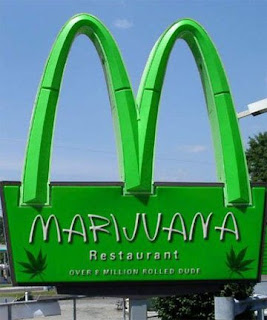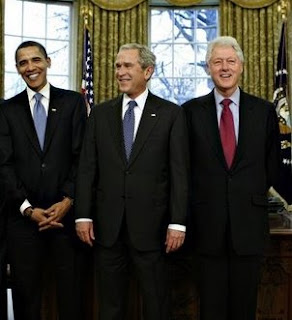.
As a journalist I have always been intrigued by the perceptions Americans have of our Southern neighbor the nation of Mexico. It always amazed me that so much of what Americans believed was influenced by the movies and news and so little by reality and the truth.
Though I was born and raised in Iowa I was fortunate to have relatives living by the Rio Grande River in Mission, Texas, just across the border from Mexico. My parents loved to take the family on trips and we spent many vacations down in the bottom of Texas where Mexicans always outnumbered the Americans.
Later when I went to college at the University of Arizona Tucson was less than an hour from Mexico and for those of us without a large allowance a trip across the border to Nogales or camping in Mexico on the Gulf of California was far less expensive. We even had the annual spring break ritual when tens of thousands of college students from Arizona to California schools would set out down the coast of Mexico and party until we ran out of money.
Even in those days we were warned of the dangers of banditos, the corrupt federales, and to beware of the water and food though the cheap tequila was always a much bigger threat. When you think about tens of thousands of rebellious teenagers invading the quiet villages of the Mexican coast I suspect they were warned about us as much as we were warned about them.
I even drove through Mexico from the border to Monterrey, the industrial city, Mexico City, Guadalajara and Acapulco and made it back safely. As students we drove with thousands of kids from Arizona down the Gulf of California to beach villages of Puerto Libertad, Guaymas and Mazatlan and seldom had a problem unless we caused the problems.
There were always dangers, about the same you might encounter in any metropolitan area in America if you got off the beaten path. But I was not a party animal and spent much of my time trying to learn about the Mexican people. I was fascinated by the rich and ancient history of the people and the hundreds of different Mexican Indian tribes I met along the way.
Back in Iowa most people were aware of Mexico only from the Walt Disney movie The Alamo, or the struggles for Independence by settlers from the Republic of Texas. Little was taught about the struggle of the people of Mexico against foreign invasions.
The Spanish invaded Mexico in 1519 and conquered an area from Mexico to South Carolina to San Francisco on the West Coast before they were through. Great Britain took part of Mexico in 1763 and part of Mexico was under French and part under Spanish rule in the time of Napoleon.
Through this period many European monarchs survived only because of the tons of gold they stole from the Mexican native Indians and the slaughter of hundreds of thousands of Mexican natives. It was the stolen wealth of Mexico that transformed Spain from a bankrupt nation to the most powerful kingdom on Earth at the time of the Spanish Armada. By 1821 the Mexicans declared independence from the Europeans but war broke out in the Texas territory which led to the fall of the Alamo in 1836 and Texas Independence the same year.
Four more military campaigns were fought between the Mexicans and Americans from 1846-48 before Treaty of Guadalupe Hidalgo ended the fighting. When the American Civil War broke out in 1861 Great Britain, Spain and France all invaded Mexico in hopes of being in position to invade the USA if Lincoln lost the war for the Union. By 1863 France gained control of Mexico, Great Britain settled for Canada, and Spain was sent packing.
During the same time the first Mexican civil war took place and ended when American troops drove the French out of Mexico in 1867 and settled claims with Mexico. This was the first time our two nations helped each other and began a series of positive steps to be good neighbors. A second Mexican Revolution took place from 1910 to 1920 and there was American intervention until the outbreak of World War I. When World War II broke out Mexico joined the Americans in fighting the Germans and Japanese.
By 1995 America again came to the aid of the Mexicans when we saved them from a banking crisis that threatened to bankrupt the nation. Throughout the development of the United States Mexican migrant workers crossing the border were always a vital and welcome contribution to the development of our vegetable and fruit crops and agricultural production. As our industrial and manufacturing industries expanded illegal immigrants crossed the border to work.
And here we are today, again faced with a dire problem in which the Mexicans are fighting a brutal war against drug cartels to stop the illegal flow of drugs into America. This is really our war, not theirs as the cartels would not be in northern Mexico if not for the American drug trade.
Make no mistake, the brutal consequence of the war is that over 28,000 Mexicans have been killed in drug battles the past couple of years along the Mexican border leaving the peaceful towns and villages in a state of war and terror. Compare that to the 5,771 American military deaths throughout the entire Iraq and Afghanistan wars. That means FIVE times as many Mexicans have been killed defending our borders from drug cartels than our military deaths fighting terrorism halfway around the world.
Our political response has been to build a wall along the border to keep the bad guys away from us, to shield us from the carnage, and to ignore the horrors and massacre being inflicted on the Mexican people for our problems. What is taking place right under our noses is a massacre that should shame the most powerful nation on earth, a bloodbath being inflicted upon an innocent people who are just trying to help us out again.
Part two of this story will provide a detailed overview on how we can correct this tragedy and rebuild the relationship with the people of Mexico that reflects our common bond throughout our history as defenders against the Europeans and others who have threatened our freedom, and how we can be partners in seeking economic and energy independence in the world.
.












